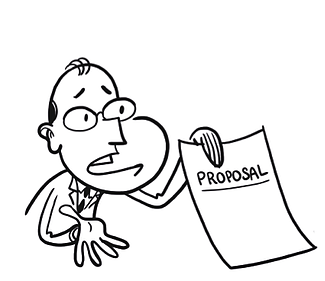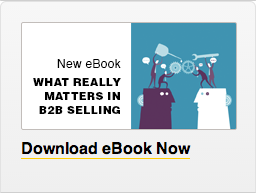 Well that’s a cheerful title for a blog! But we’ve all had proposals rejected in the past and I hope you always ask your prospects why. You may be told you were beaten on price, or the winning solution was a better fit but what prospects won’t tell you directly is that you lost out because your proposal document wasn’t very good.
Well that’s a cheerful title for a blog! But we’ve all had proposals rejected in the past and I hope you always ask your prospects why. You may be told you were beaten on price, or the winning solution was a better fit but what prospects won’t tell you directly is that you lost out because your proposal document wasn’t very good.
This is what customers tell us
We carried out research and asked 300 customer executives what they don’t like about proposal documents. These are the top 12 things:
-
Description of the solution and the price not clear
-
Management summary not good enough
-
Incomplete information compared to what was expected
-
Poor understanding of current situation and needs
-
Project plan and implementation not clear
-
Not enough information about the delivery team
-
No details of how stakeholders will benefit
-
Risks and mitigation not set out
-
Information about references
-
Poor quantification of benefits
-
Lack of competitive differentiation
-
Too much generic text
So writing proposals that meet the needs and expectations of different stakeholders in the customer organisation appears to be a big challenge for vendors. The average degree of customer dissatisfaction today is 50%.
We could write a blog about each of these points. But for now, here is brief summary of what you can do to make your proposal the one that wins.
1. Description of the solution and the price is not clear
Do we really need to say the solution and the cost has to be set out clearly? Apparently we do - 57% of customers say it needs to improve.
2. Management summary not good enough
In fact 63% of customers say it is not good enough. You have to remember that the Management Summary is the most read part of the document and the most important people read it - so it needs to be really good. It is not a summary of the contents, it is a summary of the benefits to the customer.
3. Incomplete information compared to what was expected
61% of customers are concerned about this. Why not show an example of one of your previous proposals to the prospect and ask if this is the level of detail they expect?
4. Poor understanding of current situation and needs
As a Sales Professional there is no excuse for not getting this right. Your job is to understand the position of the customer today and their requirements. They will trust you more if they think you understand where they are coming from. More than half of the customers we asked are looking for improvements here.
5. Project Plan and implementation not clear
It’s no good presenting a great solution without saying how and when it will be implemented, which is why 54% of customers are looking for improvements.
6. Not enough information about the delivery team
Half of the customers we talked to raised this issue and it is easy for you to fix. Introduce the team in proposals and say why they are qualified to deliver the solution. This is one area where you can cut and paste bios as long as they are up to date and contain information relevant to the project.
7. No details of how stakeholders will benefit
Have you developed relationships with the whole buying group and understood their needs and decision criteria? If so, you can present benefits specific to them in the document.
8. Risks and mitigation not set out
Be as positive as possible, but 48% of customers are unhappy when risk is ignored. It’s actually a good way to build trust - show that you are realistic about how projects really work and have thought about what couldgo wrong.
9. Information about references
38% of customers would like to see improvements here. Instead of customer logos, why not show a neutralised sample of the deliverables from a previous project?This figure and all the others in this document come from our own research, published in 2014 under the title What Really Matters in B2B selling - Competitive Differentiation Through Your Sales Approach.
10.Poor quantification of benefits
With 48% of customers wanting to see more of this it is important, but it’s challenging for you. Customers want to know what the benefits are but more importantly how they are going to make an impact on the bottom line. Isn’t this part of understanding their needs (see point 4)?
11. Lack of competitive differentiation
You know your organisation and your solution is better than the competition and you know why. But showing the customer how you work is more convincing than telling them how good you are. 45% of them say they would like to know what really makes you different.
12. Too much generic text
This may be the single biggest challenge for you, but with 44% of customers wanting to see an improvement it is worth getting it right. It takes time to write good proposals. If you do cut and paste content check and edit to make sure it reads well and is relevant to the customer.
Follow these guidelines and there is a significantly greater chance that your next proposal will be a win.
Enjoyed this blogpost about making killer Proposals? Download this eBook to discover what really matters in B2B selling:


